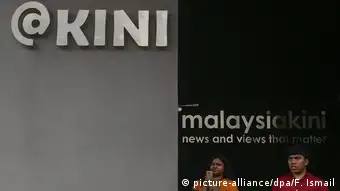GUEST POST
Media Viability: 6 strategies for success
Advances in technology have disrupted the media ecosystem. There is no single way to overcome the economic challenges of running a media outlet, but there are patterns. What do successful media companies do differently?
Media Development Investment Fund (MDIF) gives financial and technical assistance to more than 100 media companies in 40 countries. In this guest post, MDIF’s Valer Kot and Peter Whitehead share insights from their experiences and from a media viability survey that looked at media organizations across the globe. Valer Kot is Senior Media Advisor at MDIF, Peter Whitehead is Director of Communications.
What is the biggest threat to independent media? Physical violence? Jailing? Local oligarchs capturing ownership? Though all are important and happen with worrying regularity, according to the media companies we work with the answer is something else. When asked to prioritise threats to their existence, our clients gave a clear, but less eye-catching, answer: Economics.
It’s the economy, stupid
Each year we survey the news companies we work with — about 40 media organizations, ranging from digital startups to nationwide broadcasters in countries like Nepal, Kosovo, Malawi and Peru — about a range of issues relating to their business.
One question asked them to prioritize the challenges facing their companies. Heading the list of concerns in 2018 was the macroeconomic situation in the client's country, which 79 percent of respondents regarded as “a challenge that threatened the existence of the company” or “a major challenge”. Next was declining advertising revenue, which 71 percent cited as a major or existential threat, followed by competition from other media at 54 percent. Economic and political pressure from governments were ranked fourth and fifth in importance. These findings weren’t a one-off. In each of the past three years, economic challenges have come out on top.
Of course these results only represent the views of a relatively small sample of media organizations in markets where independent news companies can operate with at least some freedom, not in the most hostile regions. Even so, the economic problems they identify are the biggest daily challenges facing most independent media outlets around the world.
There is no one-size-fits-all, but there are patterns
It’s clear that there is no silver bullet to overcome the economic challenges of running a media organization. Successful news companies do plenty of things differently, depending on their size, audience niche, resources available, distribution and many other factors. But even though there is nothing like a one-size-fits-all strategy, successful media operations have similar attributes, approaches and processes that support great products. Here are the six most noticeable strategies we observed during our work providing financing and technical assistance to well over 100 media companies in 40 countries.
1. Business as important as editorial

Malaysia’s leading political news site, Malaysiakini, built its success on both content and business innovation
Effective news organizations approach the financials with the same focus and enthusiasm they have for creating and curating content. Any news venture of any size operating in any medium needs to embrace the fact that business is as important as editorial if it is to have long-term prospects of viability. Read more
2. Flat organizational structure
In tough economic times, a lean company is a precondition for success. A news outlet must trim the fat wherever it can. Any investment, be it in human resources, outsourcing services or equipment, must be carefully considered and only made when it is clear that a long-term financial advantage exists in doing so. Read more
3. Clearly defined brand and audience
Branding, communication and building a community play a crucial role in determining the success of media startups and new products launched by established companies. If you are bringing something new to market, carry out a comprehensive competitor analysis, be creative in developing a brand strategy and plan how you will build a community of engaged readers, viewers or listeners. Read more
Revenue models can change over time and new models are emerging, which means a company must always be open to new approaches. That said, it is important to get one model working well before trying a different one — a scattergun strategy is not effective. Read more
5. New and creative ways to connect
To seize opportunities, media organizations need to pursue different forms of excellence, focusing on new ways to provide news, information and services, curate content, reinvent formats and storytelling, and host conversations and further discourse that people in emerging markets need to develop free, open societies. Read more
Many independent news organizations may feel more comfortable with content innovations, as most of them are at heart journalistic projects, driven by editorial, not commercial, ambition. Though revenue models, management tools and techniques may feel alien at first, they provide the necessary fuel for the journalistic engine. Read more
To earn revenue, or not to earn revenue? That is the question
As a grant-receiving news organization — either established or startup — considers its future, perhaps the most fundamental question it must ask itself is to what extent it is willing and able to be grant-funded over the long term. While there are some excellent, high-impact donor-funded media outlets, in our view if a news organization wants to become an institution for change that will last once funders’ interest moves on to another media organization or another part of the world, it needs to make a commitment to earning its own income. Grants can be part of the mix, but should not be the only source.
For media organizations that are dependent on grants, there is no expectation that a transformation will happen overnight. It is taking the first steps along the path to viability that is most important. The road is likely to be long and complicated, but every step taken towards earning your own revenue diminishes the reliance on donors and gives you a greater say in your future. And once a media organization adopts a commercial mindset and begins earning revenue, it will be easier for it to adapt if the grant funding suddenly dries up — because the transformation from a purely non-profit mentality to a fully commercial one can be impossible if it is suddenly forced on an outlet.
Wherever you are on this road, the economics of media are challenging, but they don’t have to be insurmountable.
Adapting to a changing ecosystem
Every media company operates in a very specific business environment — including customers, competitors, suppliers, distributors, advertisers, government agencies and so on — which impacts how it delivers a specific news product or service. Each entity in the ecosystem affects and is affected by the others, creating a constantly evolving relationship in which each part of the operation must be flexible and adaptable in order to survive.
Advances in technology have disrupted the media ecosystem we knew and many of the old certainties have gone. Media companies now have to undertake bold experiments if they are to work out a path to long-term viability for their product or strategy. To carve out their path, they are going to have to be bold and brave.
DW recommends
WWW links
- Date 27.06.2019
- Feedback: Send us your feedback.
- Print Print this page
- Permalink https://p.dw.com/p/3IydB
- Date 27.06.2019
- Send us your feedback.
- Print Print this page
- Permalink https://p.dw.com/p/3IydB






